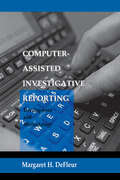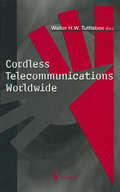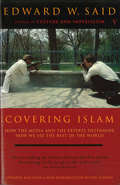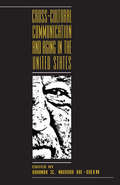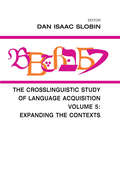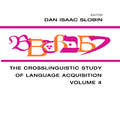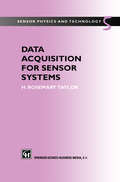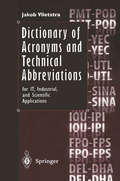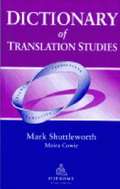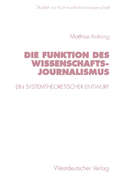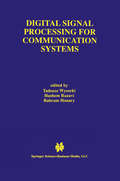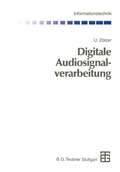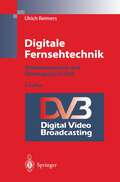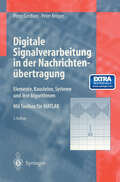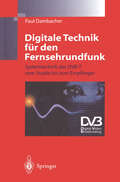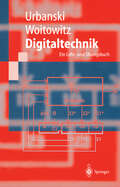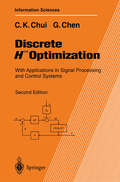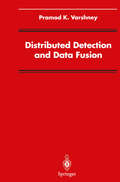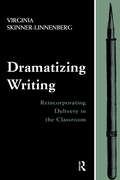- Table View
- List View
Computer-assisted Investigative Reporting: Development and Methodology
by Margaret H. DeFleurConducting computer analyses for the purposes of revealing information of significance to the press represents an extension of one of the most important forms of American journalism into the contemporary era of new technologies. Investigative reporting had its start with the establishment of the metropolitan newspaper during the early decades of the 1900s. At the time, it was a continuation of the evolving tradition of freedom of the press that had characterized American political life since colonial times. As it developed, investigative reporting stressed facts rather than the opinions of the editor or reporter. In turn, that tradition had its own intellectual roots. Today, computer-assisted investigative reporting (CAIR) extends that "marketplace of ideas" into systematic examinations of the electronic records of government. In addition, computer analyses of other kinds of information systematically gathered by journalists can provide the press with insights into trends and patterns unlikely to be revealed by other means. This unique volume addresses procedures and issues in investigative journalism that have not been explained in other publications. It sets forth -- for the first time -- a detailed and specific methodology for conducting computer-assisted investigative analyses of both large and small scale electronic records of government and other agencies. That methodology consists of the logic of inquiry, strategies for reaching valid conclusions, and rules for reporting what has been revealed by the analyses to the public in clear ways. Such systematic methodologies are essential in social and other sciences and the development of a counterpart for investigative journalism has been badly needed. That systematic methodology is developed within a context that explains the origin and major characteristics of those elements that have come together in American society to make computer-assisted investigative reporting both possible and increasingly a part of standard newsroom practices. These include the development of traditional investigative journalism, the evolution of computer technology, the use of computers by government to keep records, the legal evolution of freedom of information laws, the rapid adoption of computers in newsrooms, the increasing importance of precision journalism, and the sharp increase in recent times of computer-assisted investigative reporting by American newspapers both large and small. The issues addressed in this book are discussed in a very readable context with an abundance of examples and illustrations drawn from the real world of journalism as it is practiced daily in newsrooms around the country. Explanations of concepts, principles, and procedures are set forth in layperson's terms that require very little in the way of knowledge of computers or statistical methods.
Computer-assisted Investigative Reporting: Development and Methodology
by Margaret H. DeFleurConducting computer analyses for the purposes of revealing information of significance to the press represents an extension of one of the most important forms of American journalism into the contemporary era of new technologies. Investigative reporting had its start with the establishment of the metropolitan newspaper during the early decades of the 1900s. At the time, it was a continuation of the evolving tradition of freedom of the press that had characterized American political life since colonial times. As it developed, investigative reporting stressed facts rather than the opinions of the editor or reporter. In turn, that tradition had its own intellectual roots. Today, computer-assisted investigative reporting (CAIR) extends that "marketplace of ideas" into systematic examinations of the electronic records of government. In addition, computer analyses of other kinds of information systematically gathered by journalists can provide the press with insights into trends and patterns unlikely to be revealed by other means. This unique volume addresses procedures and issues in investigative journalism that have not been explained in other publications. It sets forth -- for the first time -- a detailed and specific methodology for conducting computer-assisted investigative analyses of both large and small scale electronic records of government and other agencies. That methodology consists of the logic of inquiry, strategies for reaching valid conclusions, and rules for reporting what has been revealed by the analyses to the public in clear ways. Such systematic methodologies are essential in social and other sciences and the development of a counterpart for investigative journalism has been badly needed. That systematic methodology is developed within a context that explains the origin and major characteristics of those elements that have come together in American society to make computer-assisted investigative reporting both possible and increasingly a part of standard newsroom practices. These include the development of traditional investigative journalism, the evolution of computer technology, the use of computers by government to keep records, the legal evolution of freedom of information laws, the rapid adoption of computers in newsrooms, the increasing importance of precision journalism, and the sharp increase in recent times of computer-assisted investigative reporting by American newspapers both large and small. The issues addressed in this book are discussed in a very readable context with an abundance of examples and illustrations drawn from the real world of journalism as it is practiced daily in newsrooms around the country. Explanations of concepts, principles, and procedures are set forth in layperson's terms that require very little in the way of knowledge of computers or statistical methods.
Cordless Telecommunications Worldwide: The Evolution of Unlicensed PCS
by Walter H. W. TuttlebeeDr. Tuttlebee is the editor of the popular Cordless Communication in Europe, and works at Roke Manor - a division of Siemens. Here, he includes significant new material drawn from contributions by major manufacturers, consultants and research laboratories, such as Ericsson, Olivetti, Philips, Northern telecom, Hutchinson, TRT and PA Consulting.The result is a global overview of the state of the art, with a detailed look at the applications, markets and standards as they have developed and continue to do so. Provides an essential technical summary for all those considering entering this challenging field or those managing existing operations.
The Corporate Brand
by N. IndWhat determines the strength of a corporate brand? And how can it be enhanced? A corporate brand conveys a company's reputation to its audience. It is about far more than names and logos. A successful corporate brand links the corporate name to the company's distinctive qualities such as service or value. This book's fundamental premise is that organisations should use all forms of communication - be they performance of products and services, the action of employees or advertising - to build interactive relationships with their audience. It shows how successful corporate brands build and maintain both 'corporate identity' and reputation.
Covering Islam: How the Media and the Experts Determine How We See the Rest of the World (Fully Revised Edition)
by Edward W SaidFrom the Iranian hostage crisis through the Gulf War and the World Trade Centre bombing, the West has been haunted by a spectre called 'Islam'. As portrayed by the news media - and by a chorus of government, academic and corporate experts - 'Islam' is synonymous with terrorism and religious hysteria. At the same time, Islamic countries use Islam to justify unrepresentative and often oppressive regimes. In this landmark work, for which he has written a new introduction, one of our foremost public thinkers examines the origins and repercussions of the media's monolithic images of Islam. Combining political commentary with literary criticism, Edward Said reveals the hidden assumptions and distortions of fact that underlie even the most 'objective' coverage of the Islamic world.
Cross-cultural Communication and Aging in the United States (Routledge Communication Series)
by Hana Noor Al-DeenRecently, the communication discipline has devoted increasing energy toward the study of aging, yet most of the research has insufficiently addressed a crucial factor in communicative relationships--culture. Meanwhile, cross-cultural/intercultural communication has not adequately addressed the aging process. Combining three powerful elements--communication, aging, and culture--all of which have an increasingly profound impact on today's multicultural society, this book focuses on older Americans in various communicative contexts within the framework of their cultures. Composed of original research by experts in their respective fields, the book combines communication, aging, and culture for a unique examination of those elements in American society. Section 1 deals with perspectives in cross-cultural communication and aging. These perspectives both illustrate the issues that greatly affect the lives of our elders and suggest ways to improve their status. Section 2 showcases three American co-cultures: Hawaiian, Arab, and Mormon illustrate how language, attitudes, and mentoring can serve as the links for maintaining cross-generational continuity in multicultural society. Section 3 demonstrates that many American organizations frequently contribute to the hardships that both internal elder customers (employees) and external elder customers (residents and patients) must endure. Section 4 incorporates popular culture and aging. It presents the role of selective popular media in portraying our elders. Because Americans rely heavily on the media, their mediated perceptions can have a profound impact on their attitudes toward the older population. Designed as a reader or supplementary text for college students in communication, gerontology, anthropology, sociology, and other related fields, this text can also be used by professionals in gerontological service areas, by libraries, and as a personal reference. It offers extensive appendices, figures, and tables for additional reference.
Cross-cultural Communication and Aging in the United States (Routledge Communication Series)
by Hana S. Noor Al-Deen Jennings BryantRecently, the communication discipline has devoted increasing energy toward the study of aging, yet most of the research has insufficiently addressed a crucial factor in communicative relationships--culture. Meanwhile, cross-cultural/intercultural communication has not adequately addressed the aging process. Combining three powerful elements--communication, aging, and culture--all of which have an increasingly profound impact on today's multicultural society, this book focuses on older Americans in various communicative contexts within the framework of their cultures. Composed of original research by experts in their respective fields, the book combines communication, aging, and culture for a unique examination of those elements in American society. Section 1 deals with perspectives in cross-cultural communication and aging. These perspectives both illustrate the issues that greatly affect the lives of our elders and suggest ways to improve their status. Section 2 showcases three American co-cultures: Hawaiian, Arab, and Mormon illustrate how language, attitudes, and mentoring can serve as the links for maintaining cross-generational continuity in multicultural society. Section 3 demonstrates that many American organizations frequently contribute to the hardships that both internal elder customers (employees) and external elder customers (residents and patients) must endure. Section 4 incorporates popular culture and aging. It presents the role of selective popular media in portraying our elders. Because Americans rely heavily on the media, their mediated perceptions can have a profound impact on their attitudes toward the older population. Designed as a reader or supplementary text for college students in communication, gerontology, anthropology, sociology, and other related fields, this text can also be used by professionals in gerontological service areas, by libraries, and as a personal reference. It offers extensive appendices, figures, and tables for additional reference.
The Crosslinguistic Study of Language Acquisition: Volume 5: Expanding the Contexts
by Dan Isaac SlobinIn this final volume in the series, the contributors attempt to "expand the contexts" in which child language has been examined crosslinguistically. The chapters build on themes that have been touched on, anticipated, and promised in earlier volumes in the series. The study of child language has been situated in the disciplines of psychology and linguistics, and has been most responsive to dominant issues in those fields such as nativism and learning, comprehension and production, errors, input, and universals of morphology and syntax. The context has primarily been that of the individual child, interacting with a parent, and deciphering the linguistic code. The code has been generally treated in these volumes as a system of morphology and syntax, with little attention to phonology and prosody. Attention has been paid occasionally to the facts that the child is acquiring language in a sociocultural setting and that language is used in contexts of semantic and pragmatic communication. In addition, there has been a degree of attention paid to the interactions between language and cognition in the process of development. As for individual differences between children, they have been discussed in those studies where they could not be avoided, but such variation has rarely been the focus of systematic attention. Differences between individual languages have been of great interest, but these differences have not often been placed in a framework of systematic typological variation. And although languages and their grammars change over time, the focus of attention on the individual child learner has generally led to neglect of explanatory principles that are best found on the level of linguistic diachrony, rather than the level of innate ideas or patterns of learning and cognition in the individual child. The chapter authors seek to explore these neglected contexts in more depth.
The Crosslinguistic Study of Language Acquisition: Volume 4
by Dan Isaac SlobinContinuing the tradition of this series, which has become a standard reference work in language acquisition, Volume 4 contains chapters on three additional languages/language groups--Finnish, Greek, and Korean. The chapters are selective, critical reviews rather than exhaustive summaries of the course of development of each language. Authors approach the language in question as a case study in a potential crosslinguistic typology of acquisitional problems, considering those data which contribute to issues of general theoretical concern in developmental psycholinguistics and linguistic theory. Each chapter, therefore, provides the following: * Grammatical Sketch of Language. Brief grammatical sketch of the language or language group, presenting those linguistic facts which are relevant to the developmental analysis. * Sources of Evidence. Summary of basic sources of evidence, characterizing methods of gathering data, and listing key references. * Overall Course of Development. Brief summary of the overall course of development in the language or language group, giving an idea of the general problems posed to the child in acquiring a language of this type, summarizing typical errors, domains of relatively error-free acquisition, and the timing of acquisition--areas of the grammar that show relatively precocious or delayed development in crosslinguistic perspective. * Data. Specific developmental aspects of the language examined in depth, depending on each individual language and available acquisition data. * Conclusions. An interpretive summary of theoretical points raised above, attending to general principles of language development and linguistic organization suggested by the study of a language of this type, plus comparisons with development of other languages.
The Crosslinguistic Study of Language Acquisition: Volume 5: Expanding the Contexts
by Dan Isaac SlobinIn this final volume in the series, the contributors attempt to "expand the contexts" in which child language has been examined crosslinguistically. The chapters build on themes that have been touched on, anticipated, and promised in earlier volumes in the series. The study of child language has been situated in the disciplines of psychology and linguistics, and has been most responsive to dominant issues in those fields such as nativism and learning, comprehension and production, errors, input, and universals of morphology and syntax. The context has primarily been that of the individual child, interacting with a parent, and deciphering the linguistic code. The code has been generally treated in these volumes as a system of morphology and syntax, with little attention to phonology and prosody. Attention has been paid occasionally to the facts that the child is acquiring language in a sociocultural setting and that language is used in contexts of semantic and pragmatic communication. In addition, there has been a degree of attention paid to the interactions between language and cognition in the process of development. As for individual differences between children, they have been discussed in those studies where they could not be avoided, but such variation has rarely been the focus of systematic attention. Differences between individual languages have been of great interest, but these differences have not often been placed in a framework of systematic typological variation. And although languages and their grammars change over time, the focus of attention on the individual child learner has generally led to neglect of explanatory principles that are best found on the level of linguistic diachrony, rather than the level of innate ideas or patterns of learning and cognition in the individual child. The chapter authors seek to explore these neglected contexts in more depth.
The Crosslinguistic Study of Language Acquisition: Volume 4
by Dan Isaac SlobinContinuing the tradition of this series, which has become a standard reference work in language acquisition, Volume 4 contains chapters on three additional languages/language groups--Finnish, Greek, and Korean. The chapters are selective, critical reviews rather than exhaustive summaries of the course of development of each language. Authors approach the language in question as a case study in a potential crosslinguistic typology of acquisitional problems, considering those data which contribute to issues of general theoretical concern in developmental psycholinguistics and linguistic theory. Each chapter, therefore, provides the following: * Grammatical Sketch of Language. Brief grammatical sketch of the language or language group, presenting those linguistic facts which are relevant to the developmental analysis. * Sources of Evidence. Summary of basic sources of evidence, characterizing methods of gathering data, and listing key references. * Overall Course of Development. Brief summary of the overall course of development in the language or language group, giving an idea of the general problems posed to the child in acquiring a language of this type, summarizing typical errors, domains of relatively error-free acquisition, and the timing of acquisition--areas of the grammar that show relatively precocious or delayed development in crosslinguistic perspective. * Data. Specific developmental aspects of the language examined in depth, depending on each individual language and available acquisition data. * Conclusions. An interpretive summary of theoretical points raised above, attending to general principles of language development and linguistic organization suggested by the study of a language of this type, plus comparisons with development of other languages.
Data Acquisition for Sensor Systems
by H.R. Taylor'Data acquisition' is concerned with taking one or more analogue signals and converting them to digital form with sufficient accu racy and speed to be ready for processing by a computer. The increasing use of computers makes this an expanding field, and it is important that the conversion process is done correctly because information lost at this stage can never be regained, no matter how good the computation. The old saying - garbage in, garbage out - is very relevant to data acquisition, and so every part of the book contains a discussion of errors: where do they come from, how large are they, and what can be done to reduce them? The book aims to treat the data acquisition process in depth with less detailed chapters on the fundamental principles of measure ment, sensors and signal conditioning. There is also a chapter on software packages, which are becoming increasingly popular. This is such a rapidly changing topic that any review of available pro grams is bound to be out of date before the book reaches the read ers. For this reason, I have described the data handling which is available in various types of program and left it to the reader to select from whatever is on the market at the time.
Dictionary of Acronyms and Technical Abbreviations: for IT, Industrial, and Scientific Applications
by Jakob VlietstraMy first encoWlter with acronyms took place when I was ten years old and growing up in an occupied COWltry during the Second World War. My father proudly annoWlced one day that, despite the ban imposed by the occupying administration, he had managed to get a radio installed and could receive the BBC. (All acronyms used in this introduction are listed in this dictionary.) To me the meaning of"BBC" was that we would receive different information about the war than we got from the usual censored broadcasts. There was, of course, the well-known acronym associated with the nT, but at that time I did not realize that it meant more than the postal service, in those years a deteriorated service. Gradually the daily use of acronyms grew. Most of the newly acquired three-and four-letter abbreviations referred to organiza tions, such as the broadcasting corporations in The Netherlands and Belgium, and references to coWltries such as the USA, USSR, and UK. When attending high school (the HBS) after the war, my knowledge of acronyms grew slowly. Even during the ten years I spent in the Dutch Merchant Marine (the GHV), the number of acronyms was limited to ad vanced equipment that eventually became known as RADAR, LORAN, and DECCA.
Dictionary Of Translation Studies (PDF)
by Mark Shuttleworth Moira CowiePublished at a time of unprecedented growth of interest in translation, the Dictionary of Translation Studies aims to present the insights of a number of different approaches to translation in an unbiased, non-partisan way. With more than 300 articles, this essential volume provides the reader with a snapshot of a rapidly developing discipline, based on work produced in serveral languages. With a clear, easy-to-follow layout, the Dictionary provides a comprehensive and highly accessible survey of key terms and concepts (such as Abusive Translation, Equivalence, Informationsangebot, Minimax Principle, Texteme and Thick Translation), types of activity (Autotranslation, Dubbing, Signed Language Interpreting), and schools and approaches (Leipzig School, Manipulation School, Nitra School). Each term is presented within the context in which it first occurred and is given a definition which is both clear and informative. Major entries include a discussion of relevant viewpoints as well as comments on how the usage and application of the term have developed subsequent to its coining. In addition, all entries provide suggestions for further reading, and there is an extensive bibliography included at the end. This is an indispensable tool for anyone studying or teaching translation at university level.
Die Funktion des Wissenschaftsjournalismus: Ein systemtheoretischer Entwurf (Studien zur Kommunikationswissenschaft #22)
by Matthias KohringMit diesem Band wird erstmalig eine vollständige Darstellung der deutschsprachigen und anglo-amerikanischen Wissenschaftsjournalismus-Forschung vorgelegt. Bilanz dieser kritischen Bestandsaufnahme: Die journalistische Berichterstattung über Wissenschaft, Technik und Medizin wird stets einseitig auf eine wissenschaftszentrierte Aufklärung der Gesellschaft verpflichtet. Der Autor zeigt die Unangemessenheit dieser normativen Aufgabenbestimmung. In konstruktiver Auseinandersetzung mit der aktuellen Journalismustheorie entwickelt er einen neuen Entwurf zur Funktion des gesellschaftlichen Journalismussystems und leitet daraus die Funktion journalistischer Beobachtung von Wissenschaft ab. Der Band leistet somit auch einen wichtigen Beitrag zu einer systemtheoretisch orientierten Journalismustheorie.
Digital Signal Processing for Communication Systems (The Springer International Series in Engineering and Computer Science #403)
by Tadeusz Wysocki Hashem Razavi Bahram HonaryDigital Signal Processing for Communication Systems examines the plans for the future and the progress that has already been made, in the field of DSP and its applications to communication systems. The book pursues the progression from communication and information theory through to the implementation, evaluation and performance enhancing of practical communication systems using DSP technology. Digital Signal Processing for Communication Systems looks at various types of coding and modulation techniques, describing different applications of Turbo-Codes, BCH codes and general block codes, pulse modulations, and combined modulation and coding in order to improve the overall system performance. The book examines DSP applications in measurements performed for channel characterisation, pursues the use of DSP for design of effective channel simulators, and discusses equalization and detection of various signal formats for different channels. A number of system design issues are presented where digital signal processing is involved, reporting on the successful implementation of the system components using DSP technology, and including the problems involved with implementation of some DSP algorithms. Digital Signal Processing for Communication Systems serves as an excellent resource for professionals and researchers who deal with digital signal processing for communication systems, and may serve as a text for advanced courses on the subject.
Digitale Audiosignalverarbeitung (Informationstechnik)
by Udo ZölzerDas Buch gibt einen Einblick in die Algorithmen und Verfahren zur digitalen Verarbeitung von Audiosignalen.
Digitale Fernsehtechnik: Datenkompression und Übertragung für DVB
by Ulrich ReimersMit diesem Standardwerk liefern die Autoren eine intensive Beschreibung der Technik des digitalen Fernsehens. Die Sachkompetenz der Autoren macht das Werk für jeden Radio- und Fernsehtechniker unentbehrlich.
Digitale Signalverarbeitung in der Nachrichtenübertragung: Elemente, Bausteine, Systeme und ihre Algorithmen
by Peter Gerdsen Peter KrögerDas Buch wendet sich an Ingenieure in der Praxis und auch an Studenten. Die wichtigsten algorithmischen Bausteine werden beschrieben und Systeme der analogen und digitalen Übertragungstechnik sowie der Meßtechnik besprochen. Den Schaltungen der analogen Signalverarbeitung werden die Algorithmen der digitalen Signalverarbeitung gegenübergestellt. Die vorliegende zweite Auflage wurde komplett überarbeitet. Neu in diese Auflage aufgenommen wurden praktische Beispiele mit dem Simulationsprogramm Matlab/Simulink. Hier kann der Leser selbst Nachrichtenübertragungssysteme entwerfen und simulieren. Dem Buch liegt eine Diskette bei, auf der sich alle verwendeten Übungsbeispiele für Matlab/Simulink und eine eigens für die Buchthemen konstruierte Toolbox befinden.
Digitale Technik für den Fernsehrundfunk: Systemtechnik des DVB-T vom Studio bis zum Empfänger
by Paul DambacherDie geschlossene Darstellung dieses aktuellen Themas ist von hohem Nutzen für Einsteiger wie für Medienexperten und Rundfunkprofi.
Digitaltechnik: Ein Lehr- und Übungsbuch (Springer-Lehrbuch)
by Klaus Urbanski Roland WoitowitzDas Buch führt verständlich in die Grundlagen der modernen Digitaltechnik ein. Neben den grundlegenden Logikbausteinen und programmierbaren Bausteinen wird die Mikroprozessor- und Mikrocontroller-Technik behandelt. Einen Schwerpunkt bildet der systematische Entwurf von Schaltnetzen und Schaltwerken unter Einsatz von programmierbarer Bausteinen. Mit Beispielen sowie Übungen und Lösungen zu jedem Kapitel.
Discrete H∞ Optimization: With Applications in Signal Processing and Control Systems (Springer Series in Information Sciences #26)
by Charles K. Chui Guanrong ChenDiscrete H¿ Optimization is concerned with the study of H¿ optimization for digital signal processing and discrete-time control systems. The first three chapters present the basic theory and standard methods in digital filtering and systems from the frequency-domain approach, followed by a discussion of the general theory of approximation in Hardy spaces. AAK theory is introduced, first for finite-rank operators and then more generally, before being extended to the multi-input/multi-output setting. This mathematically rigorous book is self-contained and suitable for self-study. The advanced mathematical results derived here are applicable to digital control systems and digital filtering.
Distributed Detection and Data Fusion
by Pramod K. VarshneyThis book provides an introductory treatment of the fundamentals of decision-making in a distributed framework. Classical detection theory assumes that complete observations are available at a central processor for decision-making. More recently, many applications have been identified in which observations are processed in a distributed manner and decisions are made at the distributed processors, or processed data (compressed observations) are conveyed to a fusion center that makes the global decision. Conventional detection theory has been extended so that it can deal with such distributed detection problems. A unified treatment of recent advances in this new branch of statistical decision theory is presented. Distributed detection under different formulations and for a variety of detection network topologies is discussed. This material is not available in any other book and has appeared relatively recently in technical journals. The level of presentation is such that the hook can be used as a graduate-level textbook. Numerous examples are presented throughout the book. It is assumed that the reader has been exposed to detection theory. The book will also serve as a useful reference for practicing engineers and researchers. I have actively pursued research on distributed detection and data fusion over the last decade, which ultimately interested me in writing this book. Many individuals have played a key role in the completion of this book.
Dramatizing Writing: Reincorporating Delivery in the Classroom
by Virginia Skinner-LinnenbergAlthough speech departments have "owned" delivery for the last 100 years, those who teach writing, especially English departments, can gain a great deal by reinstating delivery into their conceptions of and theories about writing. Thus, in the author's vision of "dramatizing writing" in the composition classroom, delivery can have an impact on all the composing steps, from invention to final draft. The goals of this text are to redefine delivery for writing, to reunite it with other parts of the classical rhetorical canon, and to practically apply it in contemporary writing instruction. This text is divided into three main sections. The first provides a survey of the history of delivery in rhetorical theory. A continuum is set up from a totally physical conception of delivery to a noetic one which incorporates more intellectual processes. The argument is that the tension heightened by discord over its definition eventually led to the splitting of delivery from the rhetorical canon. A separate discussion of the women's challenge to delivery is also included. The next section contains a survey of facets of delivery that exist in current theory combined with the author's own theory of delivery. It provides insight into the state of delivery in contemporary writing instruction. The author argues that since the split of delivery from the rhetorical canon has caused a modern bias against delivery in writing theory, many strategies that could aid in the teaching of writing have either been overlooked or undertheorized. Therefore, she borrows from current theoretical areas within and outside of writing in order to construct her own theory of delivery. The last section provides practical applications of delivery in writing instruction. Again borrowing from many sources inside and outside of composition, she describes the techniques teachers may use to incorporate delivery in a writing classroom. Through the use of delivery, more strategies may be developed to aid in the teaching of writing. Special features include: * the incorporation of some practices that had been in use in the composition classroom for many years but did not have any consciously theoretical grounding; * the discussion of women rhetoricians' theories on delivery; * the combination of many contemporary theoretical areas including theatrical, feminist, rhetorical, and pedagogical to form the author's redefined theory of delivery; and * the presentation of practical applications of this new theory of delivery for teachers to utilize in their own classrooms.
Dramatizing Writing: Reincorporating Delivery in the Classroom
by Virginia Skinner-LinnenbergAlthough speech departments have "owned" delivery for the last 100 years, those who teach writing, especially English departments, can gain a great deal by reinstating delivery into their conceptions of and theories about writing. Thus, in the author's vision of "dramatizing writing" in the composition classroom, delivery can have an impact on all the composing steps, from invention to final draft. The goals of this text are to redefine delivery for writing, to reunite it with other parts of the classical rhetorical canon, and to practically apply it in contemporary writing instruction. This text is divided into three main sections. The first provides a survey of the history of delivery in rhetorical theory. A continuum is set up from a totally physical conception of delivery to a noetic one which incorporates more intellectual processes. The argument is that the tension heightened by discord over its definition eventually led to the splitting of delivery from the rhetorical canon. A separate discussion of the women's challenge to delivery is also included. The next section contains a survey of facets of delivery that exist in current theory combined with the author's own theory of delivery. It provides insight into the state of delivery in contemporary writing instruction. The author argues that since the split of delivery from the rhetorical canon has caused a modern bias against delivery in writing theory, many strategies that could aid in the teaching of writing have either been overlooked or undertheorized. Therefore, she borrows from current theoretical areas within and outside of writing in order to construct her own theory of delivery. The last section provides practical applications of delivery in writing instruction. Again borrowing from many sources inside and outside of composition, she describes the techniques teachers may use to incorporate delivery in a writing classroom. Through the use of delivery, more strategies may be developed to aid in the teaching of writing. Special features include: * the incorporation of some practices that had been in use in the composition classroom for many years but did not have any consciously theoretical grounding; * the discussion of women rhetoricians' theories on delivery; * the combination of many contemporary theoretical areas including theatrical, feminist, rhetorical, and pedagogical to form the author's redefined theory of delivery; and * the presentation of practical applications of this new theory of delivery for teachers to utilize in their own classrooms.
